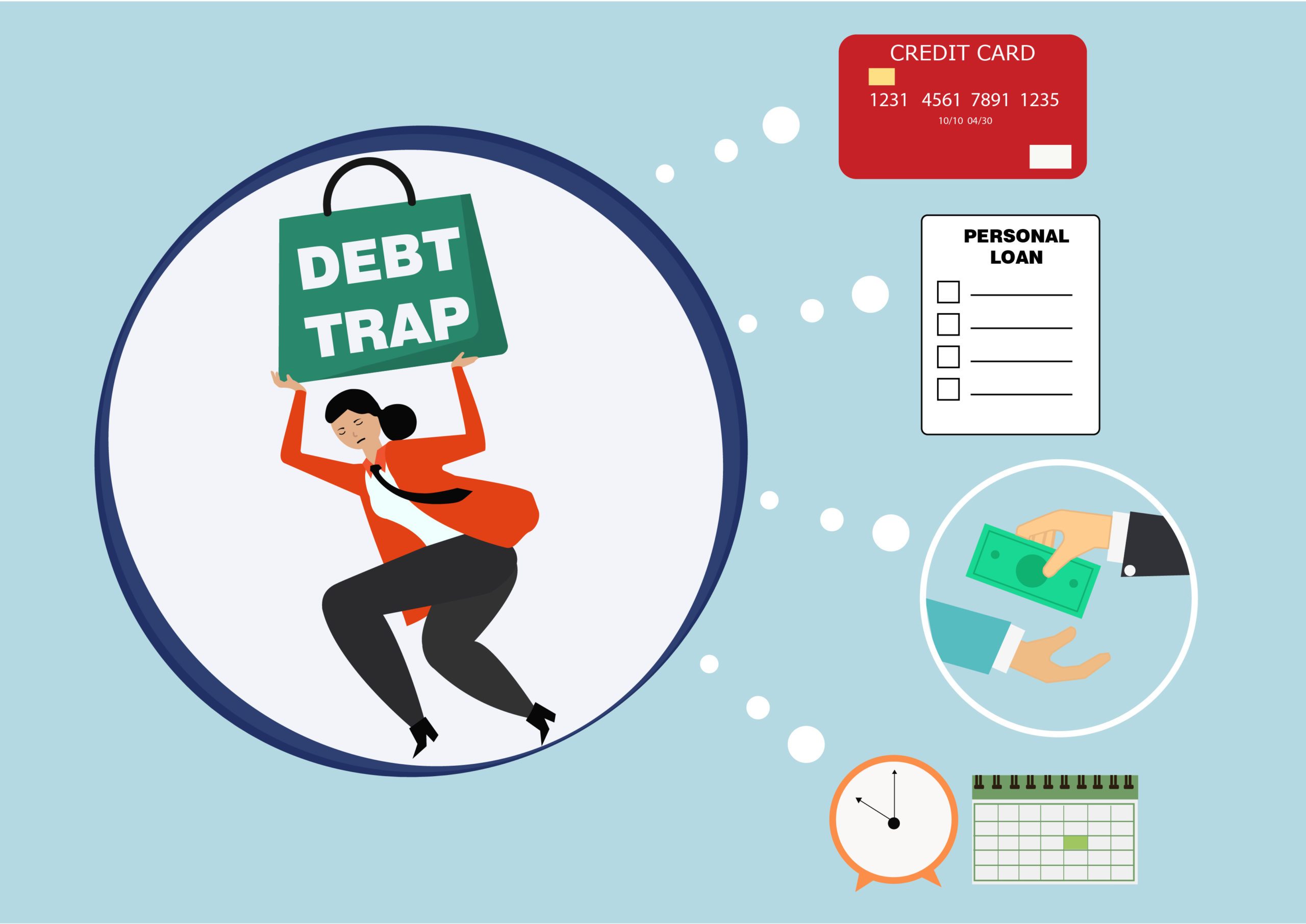
Borrowing is a convenient option for most of our financial needs. You can buy what you want without exhausting your current savings or finances. However, if you don’t responsibly manage your debts, you may end up in a debt trap.
A debt trap is a financial situation in which borrowers find themselves trapped in a vicious cycle of re-borrowing where it is difficult to pay back the borrowed money. Debt traps are usually caused due to high-interest rates or borrowing too much over a short period. It can have detrimental effects on your financial future. Here’s everything you need to know about debt traps and how to be mindful of them:
- Credit Cards: You probably have this debt trap in your wallet right now. Before you throw your credit card in the shredder, realize that they’re the ultimate double-edged sword in the financial world. They can be an excellent tool to build credit responsibly, but they need to be managed wisely.
What are the specific debt traps you’ll find tied up with credit cards?
- Balance Transfer Fees: There’s usually always some kind of fee when you transfer your balance to another bank. This can be as much as 5%, depending on the bank and that really adds up.
- Cash Advance Fees: If you take a cash advance from your credit card, you’ll have to pay a fee on this as well, usually up to 4%.
- Late Payment Fees: The fees for failing to pay your credit card on time are high, so you’ll need to closely watch your calendar.
- Interest Rates: Last but not least, interest rates can be predatory, if you aren’t careful. You’ll need to pay interest on any balance you don’t pay before your account payment date and failing to pay on time will drive this rate even higher.
- High-Interest Loans: These loans are basically very expensive credit. Payday loans are likely the worst debt trap of them all. Most of them roll into a second loan and then a third. It’s better to pay late or default on other lower-interest debt than to take out a payday loan. You should steer clear from high-interest loans, such as payday loans, car title loans, pawn shop loans, renting-to-own and income tax refund loans.
- EMIs Exceeding 50% of Income: Compulsive spending strains your budget and leads you to a debt trap, once you regularly spend through EMI schemes or discounts, which individuals often fall prey to. Hence, it’s important to be mindful of your finances before spending compulsively. If your EMI payments exceed 50% of your income, you're headed towards a debt trap.
- Loan for Regular Expenses: If you discover yourself borrowing money to meet your regular expenses such as rent, kids’ school fees and grocery purchases, you may be sliding into a debt trap. Such a situation should raise an enormous red flag and you ought to focus on paying off your debts as soon as possible and avoid the temptation of further debt.
- Home Equity Loans: The last unexpected debt trap is home equity loans. These can be a major danger to your financial situation as well as your housing situation. With a home equity loan, you’re essentially borrowing against the value of your house. Any equity you’ve built in your home is eligible to be loaned to you. That being said, this also means your home becomes the collateral. If you start missing payments, you could lose your home if the arrears remain outstanding. Ultimately, home equity loans are unlikely to be a good way to restore your finances because it only provides you with short term relief.
If you're already in a debt trap, getting out can appear to be a daunting task. Once a borrower defaults on debt payments, it’s difficult to get cheaper loans to repay the prevailing debts, which further increases the debt burden.
Although getting out of a debt trap is difficult, following these steps can help you escape debt traps:
- Assess your finances: The first step to get out of a debt trap is understanding the extent of the debt. List down all of your debts and identify which loans are draining your pocket the most. Next, list down the must-have expenses like your day-to-day household expenses and insurance premiums and calculate the entire amount you can afford to repay on a monthly basis.
- Prioritize debt repayments in line with interest rates: Unsecured loans like credit card dues have high-interest rates, which can increase your cost of borrowing exponentially. Hence, you ought to focus on paying off debts with high-interest rates first and then switch to the low-interest ones.
- Seek help from family and friends: Many hesitate when it comes to asking for loans from friends and family. By borrowing from your friends and family, you can avoid paying high-interest rates, which successively will help you get out of a debt trap. However, this option might not work out at times.
- Liquidate your investments to pay off your debts: If you have made any investments like fixed deposits or mutual funds, it is sensible to liquidate it and repay loans.
- Restructure your loan: Most lenders have provisions for restructuring a loan by extending the tenure. This can bring down the EMI so that the payment becomes manageable. However, the net interest payout will increase, once you extend the tenure of a loan.
In a perfect world, we wouldn’t have to be so vigilant about our finances. In reality, we have to be mindful of these unexpected debt traps so we can keep our money safe. It’s always a smart idea to learn more about your finances and debt. Knowledge really is power and the more you know, the better off you will be, financially.
